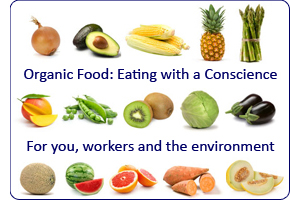23
Jul
Use of Household Cleaners Linked to Increased Risk of Breast Cancer
(Beyond Pesticides, July 23, 2010) A new study published in BioMed’s online journal, Environmental Health, links endocrine disrupting pesticides and other chemicals in household cleaning products to an elevated risk of breast cancer. Researchers at the Silent Spring Institute in Newton, MA and Boston University found that women who use household cleaners more often have double the risk of breast cancer, compared to women who use household cleaners less frequently. The study includes over 1,500 women selected from Cape Cod, MA and found a correlation between cases of breast cancer and the number of women who reported using household cleaners, particularly solid, slow-release air fresheners when used more than seven times a year, and mold removers when used more than once a week.
The antimicrobials, phthalates and alkylphenolic surfactants often found in mold and mildew products are associated with various health and environmental issues. The antimicrobial triclosan for example, can cause skin irritation, allergy susceptibility, bacterial and compounded antibiotic resistance, and dioxin that jeopardizes fragile aquatic ecosystems. The study highlights methylene chloride (in some fabric cleaners), nitrobenzene (soaps, polishes), perfluorinated compounds (stainresistant, waterproof coatings), phthalates (surfactants), alkylphenols (solvents), parabens (preservatives), triclosan, and polycyclic musks (fragrance) as ingredients of concern.
Past studies from the Silent Spring Institute have shown that many of the chemicals used in household cleaning products are endocrine disrupting compounds that produce mammary gland tumors in rats.
This study focuses on 787 women diagnosed with breast cancer between 1988 and 1995 and 721 controls from the Cape Cod, MA area. Through telephone interviews, researchers collected information about the participants’ family history of breast cancer, menstrual and reproductive history, height, weight, alcohol and tobacco use, physical activity, pharmaceutical hormone use, and education. They were also asked about five categories of cleaning products, including solid and spray air fresheners, surface cleaners, oven cleaners, and mold/mildew products, as well as 10 categories of pesticides in and around their homes, including insecticides, lawn care, herbicides, lice control, insect repellents, and pest control on pets.
Using predefined categories, the women reported on the frequency of their use of the different products and were then asked about their beliefs about factors that may contribute to breast cancer. These factors include heredity, diet, chemicals and pollutant in the air and water, and a woman’s reproductive or breastfeeding history. Details on the interview questions are posted on Silent Spring Institute’s website.
The researchers acknowledged and corrected for potential recall bias (for instance, a woman who believed chemicals contribute to breast cancer might falsely believe she used those products more frequently) by comparing the odds ratio of product use and beliefs about whether chemicals and pollutant contribute to breast cancer to the odds ratio for family history and beliefs about heredity.
However, researchers point out that self-reported product use has the potential to represent long-term exposure to a wide range of compounds and stated in their report, “Although exposure levels may be low and EDCs (endocrine-disrupting chemicals) are typically less potent than endogenous hormones, limited knowledge of product formulations, exposure levels, and the biological activity and toxicity of chemical constituents alone and in combination make it difficult to assess risks associated with product use.”
Confounders such as mammography use, medical radiations, lactation, hormone replacement therapy, oral contraceptive use, diethylstilbestrol exposure, body mass index, smoking, alcohol consumption, teen and adult physical activity, race, marital status, and religion were evaluated, but none changed the core adjusted odds ratio estimates by over 10%, so they were not included in the final analysis. Study participants are predominantly white (98%), 60-80 years of age (60%), and completed high school or higher education (94%).
Sandra Steingraber, Ph.D., a New York ecologist, cancer survivor and author of the books Living Downstream and Having Faith, told the Columbus Dispatch that she advises everyone to stop using chemical cleaners, and stick to least-toxic alternatives, such as baking soda and vinegar. Dr. Steingraber, who is a scholar in residence at Ithaca College stated, “I just see this as such an easy problem compared to a lot of things” but points to the new research as evidence that “the conversation is shifting now. We can’t just sort of look at the murky evidence on cancer and the environment and sort of set it aside because it’s too inscrutable.”
Linking the use of particular chemicals in our environment to cancer cases is indeed difficult to research, and the epidemiologists involved in this study recommend that “in order to avoid possible recall bias, the researchers recommend further study of cleaning products and breast cancer using prospective self-reports and measurements in environmental and biological media.”
Additionally, past studies covered by Beyond Pesticides suggest that overuse of disinfectants can be harmful, rather than beneficial to our health and the environment. Disinfectants tend to kill a wide variety of bacteria, reducing both “bad” bacteria associated with illness, as well as the “good” bacteria that perform useful functions in our environment and in our bodies. The overuse of antimicrobial chemicals has also been linked to the creation of drug-resistant bacteria, or “superbugs,” which are bacteria and viruses that have become resistant to the antimicrobial compounds and antibiotic drugs developed to control them.
You can reduce your risk by avoiding toxic pesticides and switching to more natural cleaning products as recommended by Beyond Pesticides in our 2007 issue of our School Pesticide Monitor. You can also find products free of the harmful antibacterial triclosan from our list of companies that have signed the pledge to be triclsoan-free. For more information, please see Beyond Pesticides’ antibacterial and antimicrobial page.















